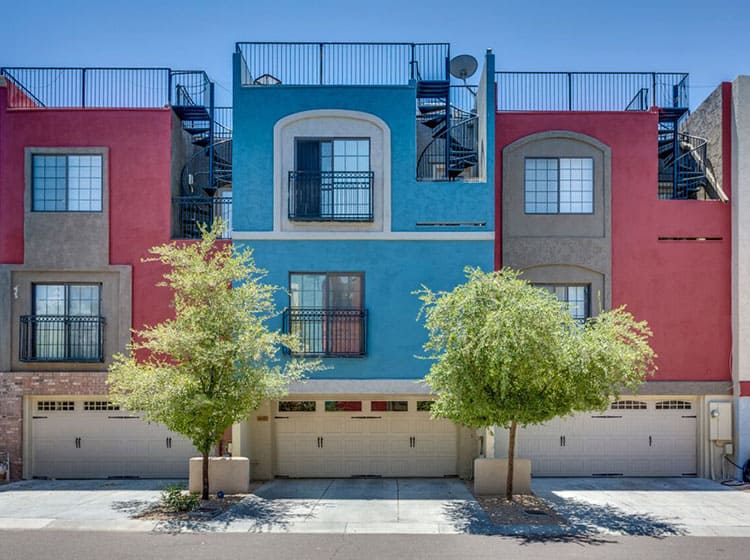Discover The Keys To Accomplishing An Expert Outcome In Your External Paint Project By Understanding The Influence Of Weather Aspects
Discover The Keys To Accomplishing An Expert Outcome In Your External Paint Project By Understanding The Influence Of Weather Aspects
Blog Article
Writer-Dejesus Morin
Comprehending just how weather conditions can affect the outcome of an exterior paint undertaking is extremely important for accomplishing a flawless surface. From temperature fluctuations modifying paint attachment to humidity degrees influencing drying times, each element of climate plays a substantial role in the success of your task. Furthermore, wind speed and rainfall can present unanticipated obstacles that may endanger the high quality of the outcome. As we navigate via the subtleties of weather condition's effect on exterior paint, it ends up being apparent that precise planning and critical timing are crucial for making certain an expert and long lasting end result.
Perfect Temperature Level Range for Paint
When considering outside painting jobs, the excellent temperature level array plays an essential function in achieving optimum results. Painting in the right temperature level conditions guarantees that the paint adheres appropriately to the surface area, dries equally, and cures properly. Normally, the suggested temperature level variety for external painting is between 50 to 85 levels Fahrenheit.
Painting in temperature levels listed below 50 degrees Fahrenheit can result in problems such as bad paint adhesion, extended drying times, and a raised chance of breaking or peeling.
On the other hand, painting in temperature levels over 85 levels Fahrenheit can create the paint to dry also swiftly, bring about blistering, gurgling, and an irregular surface.
To achieve the most effective results, it is essential to inspect the weather forecast before starting an external painting job. Preferably, purpose to repaint throughout light weather with modest temperatures and low humidity levels.
Results of Moisture on Paint Drying
Humidity degrees substantially influence the drying out procedure of paint applied to exterior surfaces. retail painters can prolong the drying out time of paint, causing prospective issues such as dripping, spotting, or perhaps the formation of bubbles on the painted surface. Excess moisture in the air slows down the evaporation of water from the paint, hindering the healing procedure. This is particularly problematic for water-based paints, as they count on dissipation for drying out.
On the other hand, low humidity levels can additionally impact paint drying. Exceptionally dry problems may create the paint to completely dry too rapidly, bring about poor attachment and a rough surface. In such situations, adding a paint conditioner or splashing a fine haze of water in the air can aid manage moisture degrees and enhance the painting result.
To ensure ideal drying out problems, it is a good idea to paint when the humidity degrees range between 40% and 50%.
Tracking humidity levels and taking appropriate steps can assist accomplish a smooth and sturdy paint finish on exterior surfaces.
Wind and Precipitation Factors To Consider
Wind speed and rainfall are vital aspects that considerably influence the success of an external paint project.
When https://www.forbes.com/home-improvement/painting/time-for-paint-to-dry/ concerns wind, both rate and instructions are important factors to consider. High wind speeds can create paint to completely dry as well swiftly, leading to a below average completed with potential problems like cracking or unequal structure. Furthermore, wind can bring particles that might stick to the damp paint, leading to blemishes. Consequently, painters need to intend to deal with days with light to moderate winds for optimal paint conditions.
On office painters , rainfall, whether rain or snow, can be incredibly detrimental to the outcome of an outside painting job. Dampness from rainfall can impede paint bond, creating peeling and bubbling over time. It is essential to avoid painting throughout wet or snowy climate to make sure the durability and high quality of the paint job. Painters must also enable sufficient time for the surface to completely dry thoroughly after any rainfall prior to starting or resuming the painting process.
Verdict
In conclusion, climate condition play a significant function in the outcome of an external painting task. https://find-a-painter-near-me09653.bloginder.com/34548638/from-ordinary-to-phenomenal-discover-how-specialist-residence-painters-can-enhance-your-home-s-allure , humidity levels, wind rate, and precipitation all add to the success or failing of the paint task.
It is vital to take into consideration these aspects and strategy accordingly to make certain appropriate paint attachment, drying out times, and general top quality of the completed item.
